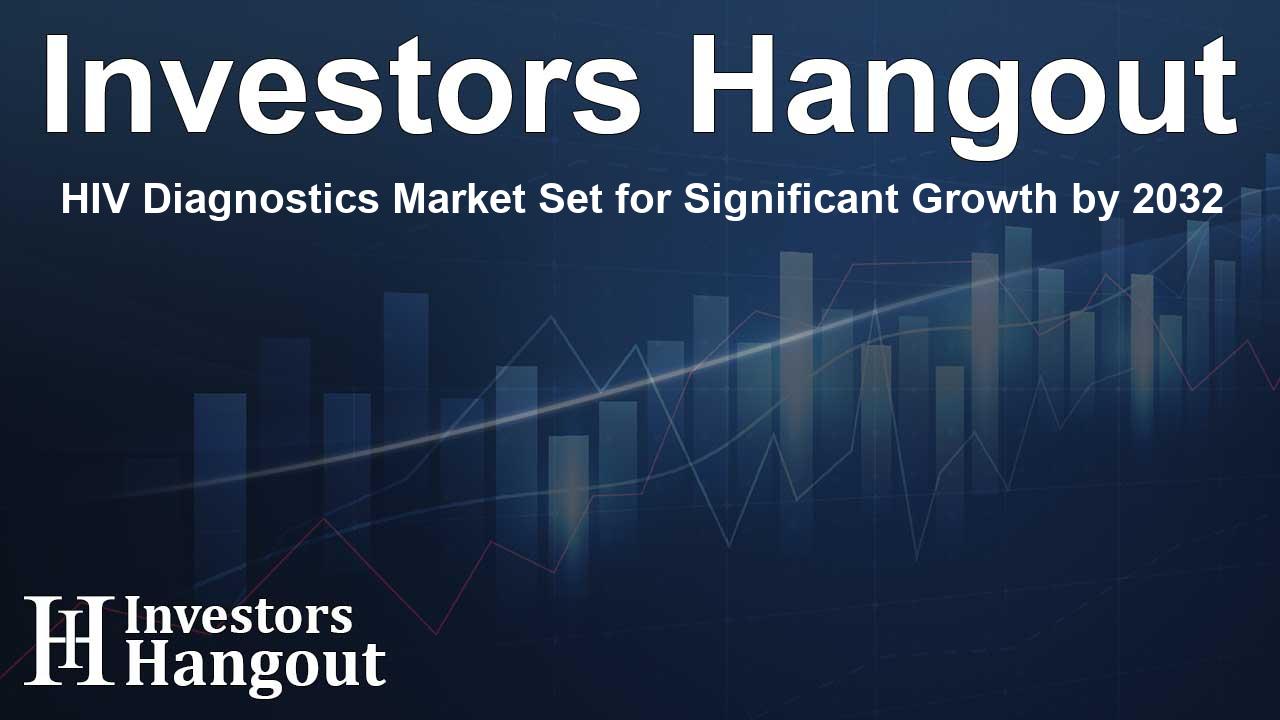HIV Diagnostics Market Set for Significant Growth by 2032

HIV Diagnostics Market Overview
The HIV diagnostics market is experiencing substantial growth, driven by the increasing number of testing and significant technological advancements. Recent estimates indicate that this market, which was valued at USD 1.15 billion in 2023, is projected to reach USD 1.80 billion by 2032, reflecting a robust compound annual growth rate (CAGR) of 5.10% from 2024 to 2032.
Factors Fueling Market Growth
The need for efficient and accessible diagnostic tests has become more critical as the incidence of HIV continues to rise globally. Factors contributing to market growth include advances in technology, improved healthcare infrastructure, and a heightened emphasis on early diagnosis and preventive measures. Countries across Asia-Pacific and North America, in particular, are witnessing significant transformations in their diagnostic capabilities due to increased public support and investment in healthcare.
Current Market Dynamics
In the U.S. alone, the HIV diagnostics market reached an estimated USD 0.20 billion in 2023, with forecasts suggesting an increase to USD 0.27 billion by 2032—a CAGR of 3.36%. This growth can be attributed to heightened diagnosis rates, greater awareness of HIV, and the integration of advanced diagnostic technologies. Innovations such as at-home HIV diagnostic kits and point-of-care testing facilities have played a pivotal role in making testing more efficient and accessible.
Key Players in the Market
The HIV diagnostics landscape is supported by several major players. Companies like Alere Inc., Abbott, Bristol-Myers Squibb, and Gilead Sciences are at the forefront, innovating new diagnostic tools and tests. Their products, ranging from antibody tests to advanced diagnostic systems, continue to shape the market. With their rapid development of new testing technologies, these organizations help drive market growth by meeting the rising demand for reliable and quick testing solutions.
Segment Analysis
The market can be segmented in various ways, including product types, testing modes, and end-use categories. Consumables led the market with a 45.5% market share in 2023 due to their essential role in diagnostic processes. Additionally, laboratory-based testing remained the dominant testing mode, accounting for 90.9% of the market share, due to its accuracy and reliability. However, self-testing segments are showing promising growth, driven by demand for convenience and privacy.
Recent Developments and Innovations
Several recent developments within the HIV diagnostics market highlight the ongoing innovations. For instance, pivotal agreements and new product launches are reshaping testing possibilities. Notable advancements include the launch of Abbott’s ARCHITECT HIV Ag/Ab Combo test, which promises rapid and reliable results, and Cepheid’s Xpert HIV-1 Qual XC test, aimed at improving accessibility in low-resource settings. Such developments reflect the industry’s shift toward more efficient and user-friendly testing methodologies.
Regional Market Insights
Geographically, North America has maintained a significant lead in the HIV diagnostics market, bolstered by its advanced healthcare systems and government initiatives aimed at enhancing HIV testing and awareness. Comparatively, the Asia Pacific region is anticipated to exhibit the highest growth rates due to an increasing population affected by HIV and escalating government initiatives aimed at tackling the disease. This trend emphasizes the importance of targeted healthcare strategies to enhance service accessibility and diagnostic resources in these rapidly evolving markets.
Statistical Overview
In 2023, approximately 1.5 million new HIV cases were reported, with Sub-Saharan Africa being the most affected region. In addition, a significant 60% of global HIV testing efforts were funded through government initiatives, demonstrating the critical role of public sector investment in combating HIV. This consistent funding allows for the development of innovative diagnostic solutions that reflect modern healthcare demands.
Conclusion
The HIV diagnostics market is on an upward trajectory, fueled by technological advancements and a growing global mandate for improved public health response. As awareness and access to testing increase, the market is expected to grow substantially. Stakeholders in the healthcare sector must remain abreast of these developments to leverage opportunities and address the pressing needs for effective HIV diagnostic solutions.
Frequently Asked Questions
What is the projected growth of the HIV diagnostics market?
The market is expected to grow from USD 1.15 billion in 2023 to USD 1.80 billion by 2032.
What factors are driving this market growth?
Key factors include technological advancements, increased testing rates, and a focus on early diagnosis and prevention.
Who are the major players in the HIV diagnostics market?
Major players include Alere Inc., Abbott, Bristol-Myers Squibb, and Gilead Sciences, among others.
What testing modes dominate the market?
Laboratory-based testing is the predominant mode, but self-testing is gaining popularity.
How is the regional landscape affecting the market?
North America leads in advanced diagnostics, while Asia Pacific is rapidly growing due to improved awareness and funding initiatives.
About The Author
Contact Henry Turner privately here. Or send an email with ATTN: Henry Turner as the subject to contact@investorshangout.com.
About Investors Hangout
Investors Hangout is a leading online stock forum for financial discussion and learning, offering a wide range of free tools and resources. It draws in traders of all levels, who exchange market knowledge, investigate trading tactics, and keep an eye on industry developments in real time. Featuring financial articles, stock message boards, quotes, charts, company profiles, and live news updates. Through cooperative learning and a wealth of informational resources, it helps users from novices creating their first portfolios to experts honing their techniques. Join Investors Hangout today: https://investorshangout.com/
The content of this article is based on factual, publicly available information and does not represent legal, financial, or investment advice. Investors Hangout does not offer financial advice, and the author is not a licensed financial advisor. Consult a qualified advisor before making any financial or investment decisions based on this article. This article should not be considered advice to purchase, sell, or hold any securities or other investments. If any of the material provided here is inaccurate, please contact us for corrections.
